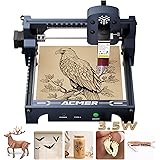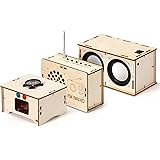Are you considering a sustainable yet aesthetically pleasing solution for your garden or patio? The captivating visuals in the accompanying video showcase the transformative potential of upcycling pallets into functional flower planter boxes, a prime example of innovative DIY garden ideas.
This approach transcends mere aesthetics, addressing core principles of resourcefulness and ecological stewardship. Crafting a bespoke pallet planter box not only enhances your outdoor space but also champions the repurposing of materials that might otherwise contribute to landfill waste.
Deconstructing the Pallet: Selection and Preparation
The foundation of any successful reclaimed wood project lies in meticulous material selection and preparation. Not all pallets are created equal; discerning the appropriate source material is paramount for both safety and durability.
1. Pallet Sourcing and Safety Protocols
Firstly, prioritize pallets stamped with the “HT” (Heat Treated) mark. This designation indicates that the wood has undergone a heat treatment process to eliminate pests and pathogens, making it safer for domestic use and gardening applications, especially if edible plants are considered. Conversely, absolutely avoid pallets marked “MB” (Methyl Bromide), as this chemical treatment leaves toxic residues unsuitable for any gardening endeavor or close human contact.
Secondly, inspect pallets for structural integrity, excessive weathering, or chemical spills. Reject any pallet exhibiting significant rot, mildew, or visible stains from unknown substances, as these factors compromise both the longevity of your upcycled planter and the health of your plants.
2. Dismantling Techniques for Optimal Yield
Efficient pallet dismantling requires the right tools and a methodical approach to preserve the maximum amount of usable lumber. A reciprocating saw with a metal-cutting blade is highly effective for severing nails, minimizing wood damage compared to brute-force prying methods.
Alternatively, a specialized pallet buster tool can leverage mechanical advantage to separate planks with less effort, maintaining plank integrity. Always wear appropriate personal protective equipment, including heavy-duty gloves and eye protection, when handling reclaimed wood.
Designing for Longevity and Horticultural Efficacy
Beyond the structural assembly, thoughtful design principles underpin the success and longevity of your flower planter box. Integrating robust construction with horticultural best practices ensures a thriving environment for your flora.
3. Structural Integrity and Dimensional Stability
The inherent dimensional stability of the pallet wood, typically pine or oak, must be considered when designing the planter. Utilize thicker stringer boards for the primary load-bearing framework to counteract the significant lateral forces exerted by saturated soil. Employ robust joinery, such as screws with appropriate gauge and length, instead of nails, which are prone to loosening over time due to wood movement and external stresses.
Consider incorporating internal bracing or corner blocks, especially for larger units, to prevent bowing or racking. This strategic reinforcement significantly enhances the planter’s lifespan, mitigating the effects of freeze-thaw cycles and continuous soil pressure.
4. Optimizing Drainage and Moisture Management
Effective drainage is non-negotiable for plant health within a confined raised bed or planter. Design the base with ample drainage holes, spaced approximately 4-6 inches apart, to prevent waterlogging and root rot. Augment this with a layer of gravel or coarse perlite at the bottom of the planter before adding soil, facilitating unimpeded water egress.
A permeable geotextile fabric liner should then be placed over the drainage layer and along the inner walls. This barrier prevents soil erosion through drainage holes and extends the life of the wood by minimizing direct contact with moist soil, while still allowing water to pass through freely.
Construction Best Practices and Finishing Touches
The actual construction phase requires precision and adherence to established woodworking techniques. Proper assembly and a protective finish are critical for both the aesthetic appeal and the enduring performance of your upcycled pallet planter.
5. Precision Cutting and Assembly
Firstly, utilize a miter saw or table saw for accurate, square cuts, which are fundamental for a professional finish and tight-fitting joints. Imperfect cuts compromise structural integrity and aesthetic appeal, leading to gaps that can harbor pests or accelerate wood degradation.
Secondly, pre-drilling pilot holes before driving screws is imperative, particularly with denser reclaimed wood, to prevent splitting. Employ wood glue in conjunction with mechanical fasteners for enhanced joint strength and resistance to shear forces, ensuring a durable bond for your outdoor planter.
6. Wood Treatment and Weatherproofing Strategies
Protecting the raw wood from environmental degradation is vital for longevity. Apply an exterior-grade wood preservative or sealant that contains UV inhibitors and fungicidal properties. These treatments shield the wood from moisture ingress, fungal decay, and the damaging effects of solar radiation.
For planters intended for growing edible plants, opt for food-safe or natural oil-based finishes, such as tung oil or linseed oil, ensuring they are free from volatile organic compounds (VOCs). Reapplication every 1-2 years is recommended to maintain optimal protection and preserve the aesthetic quality of your sustainable gardening project.
Cultivating Success: Planting and Maintenance
Once constructed and finished, the pallet planter box transitions from a carpentry project to a horticultural canvas. Optimal planting strategies and ongoing maintenance ensure your flora flourishes.
7. Soil Composition and Plant Selection
Utilize a high-quality potting mix specifically formulated for container gardening, characterized by excellent drainage and aeration properties. Avoid dense garden soil, which compacts easily in confined spaces, impeding root growth and water percolation. Enrich the potting mix with slow-release organic fertilizers or compost to provide sustained nutrient availability for your plants.
Select plant species that are well-suited for container life, considering their mature size, root system, and specific light and water requirements. Companion planting can also optimize space and deter pests in your innovative DIY garden ideas implementation.
8. Integrated Irrigation and Ongoing Care
Implement an efficient irrigation strategy to maintain consistent soil moisture levels without overwatering. Drip irrigation systems or self-watering inserts are highly effective in container environments, minimizing water waste and providing targeted hydration. Monitor plants regularly for signs of nutrient deficiencies or pest infestations, addressing issues promptly to prevent widespread problems.
Seasonal fertilization and occasional pruning will sustain plant vigor and extend blooming periods, ensuring your upcycle pallets creation remains a vibrant focal point in your outdoor sanctuary. This holistic approach ensures the longevity of both the planter and its botanical inhabitants.







